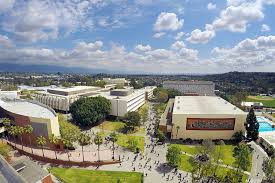Australia, with its alluring prospects in education, lifestyle, and career growth, beckons individuals from across the globe. The common perception is that a job offer is a prerequisite for migration. However, there are several alternative routes that allow people to make the move Down Under even without a firm employment commitment in hand. Understanding these pathways can open up new horizons for those eager to start a new chapter in Australia.
Skilled Migration Programs
General Skilled Migration (GSM)
The GSM program is a popular choice. It operates on a points system. Points are awarded based on factors like age, English proficiency, educational qualifications, and work experience. For example, a young professional in their late twenties with a master’s degree in IT and a few years of relevant industry experience can score well. They need to have their skills assessed by the relevant authority. Once they meet the required points threshold, usually 65 or above, and pass health and character checks, they can apply for permanent residency.
Regional Skilled Migration
This focuses on filling labor shortages in regional areas. Applicants can get extra points for choosing to settle in less populated regions. For instance, a nurse willing to work in a rural hospital in Queensland might have an added advantage. They also need to meet the skill and experience criteria, but the regional aspect boosts their chances. It’s an opportunity to contribute to the development of regional Australia while fulfilling personal migration goals.
Student to Permanent Resident Transition
Study in Australia First
Many international students see Australia as a stepping stone. By enrolling in a recognized institution and course, they gain valuable skills and knowledge. A student studying engineering at an Australian university can take advantage of internships and industry connections. After graduation, they may be eligible for a post-study work visa, which can then lead to permanent residency if they meet certain criteria, such as working in a relevant field and having a good employment record.
Meeting the Residency Requirements Post-Study
To convert from a student visa to permanent residency, students must complete a course of a certain duration and level. Their skills and occupation must be in demand in Australia. For example, a student who studied accounting and has worked in the field for a couple of years after graduation, with a good performance record, may have a better chance of obtaining permanent residency compared to someone with a less marketable degree.
Family Reunion and Partner Visas
Partner Visas
For those in a relationship with an Australian citizen or permanent resident, partner visas offer a pathway. The relationship must be genuine and ongoing. Couples need to provide evidence such as shared finances, joint living arrangements, and social interactions. There are different stages in the application process. Initially, a provisional visa may be granted, and after a period of time and meeting further conditions, it can progress to permanent residency, depending on the stability and length of the relationship.
Family Reunion Visas
Children who are Australian citizens or permanent residents can sponsor their parents. However, these visas have long waiting periods and strict financial requirements. Sponsors need to prove they can support their parents financially to ensure they won’t be a burden on the Australian welfare system. Health and character checks are also mandatory for the parents.
Business and Investment Migration
Business Innovation and Investment Visa (BIIP)
This visa is designed for those with business acumen and investment capacity. Applicants need to have a successful business background or significant investment funds. They are required to invest a certain amount in an Australian business or venture, which can range from starting a new business to investing in an existing one. For example, an entrepreneur with experience in the technology sector might invest in a startup in Australia, creating jobs and contributing to the economy.
Regional Business and Investment Opportunities
There are also opportunities in regional Australia. The government offers incentives to encourage migrants to set up businesses in less populated areas. These areas may have specific industry needs, like agriculture or tourism. Migrants who choose this option can benefit from faster processing times and additional support, while also helping to boost the local economy.
Conclusion
Migrating to Australia without a job offer is indeed possible through multiple channels. Whether it’s leveraging your skills, pursuing education, reuniting with family, or making business investments, there are options to suit different circumstances. Each pathway has its own set of requirements and procedures, so it’s crucial to thoroughly research and understand them. With careful planning and preparation, you can take the first step towards building a new life in Australia, even without a job offer waiting for you on arrival.
Related Topics:




















